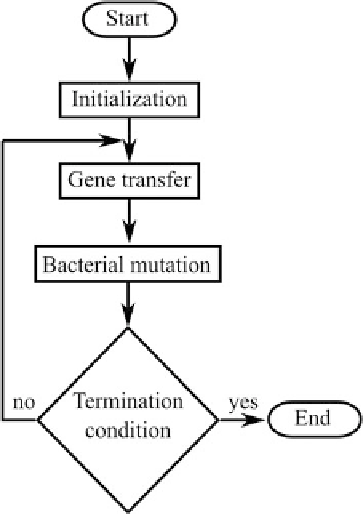Information Technology Reference
In-Depth Information
Fig. 3 Flow chart of the BEA
Gene transfer (Fig.
5
) operates with the ordered list of bacteria. The so called
superior half of the population contains the bacteria with better objective values.
The other bacteria are the members of the inferior half. The operator repeats T times
the following: after the selection of exactly one bacterium from the superior half
and one from the inferior half, it selects a portion of the genes of the superior
bacterium and copies it into the inferior bacterium. The objective value of the
modi
ed bacterium must be re-evaluated, and the whole population has to be re-
sorted, too. Depending on the objective value of the modi
ed bacterium it may get
into the superior half.
GA and BEA are global optimisation techniques and provide near-optimal,
approximate solution to the speci
c problem. They can be used even if the objective
function is noisy, nonlinear, high dimensional, multimodal or non-continuous. The
derivatives of the objective function is not needed thus it does not cause a problem
if it is unknown or does not exists.
The original BEA was applied to a wide range of problems, e.g. to solve bin
packing problem (D
di et al.
2010b
) or a special kind of the travelling salesman
problem (Botzheim et al.
2009b
). BEA was improved several times during the past
years. Several results are collected in Botzheim et al. (
2009a
). An important
milestone of the research was the creation of the bacterial memetic algorithm
(BMA) (Botzheim et al.
2009a
). It extends the two main operators of BEA with a
á
ny
á

Search WWH ::

Custom Search